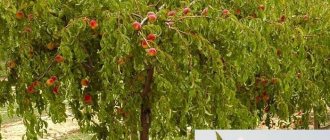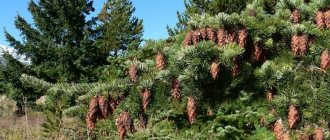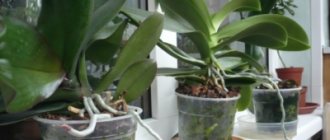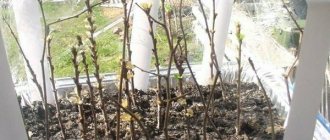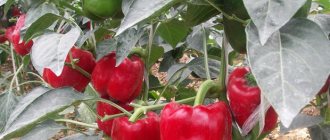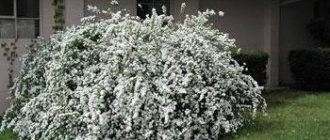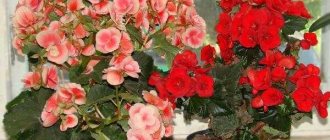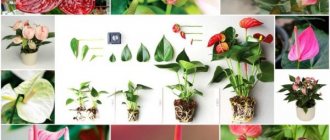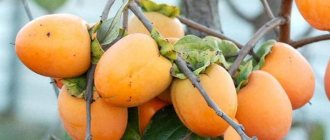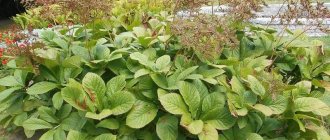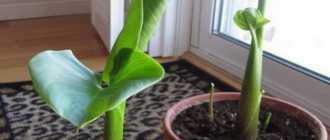Loading…
Loading…
Bergenia, as the plant is called in the official classification, naturally lives in the foothills of Kazakhstan and Mongolia, Altai and China. However, the culture is better known to gardeners as bergenia, photos of the varieties and species of which always amaze with the most delicate shades of pink, white, lilac flowers and the splendor of leaves collected in lush basal rosettes.
A spectacular and unpretentious plant, which was first introduced into cultivation back in the 18th century, is still not too spoiled by breeders. Some of the existing varieties were bred on the basis of wild specimens of the most studied species - bergenia thick-leaved. And the bulk of cultivated plants are hybrids with larger flowers than in nature of various colors, as well as specimens with variegated and purple leaves.
In total, botanists have discovered and studied 10 species of bergenia or bergenia, although many varieties are unlikely to be seen in the garden. These are endemics, found in very small areas, and rare plants included in regional and national Red Books.
Bergenia thick-leaved (B. crassifolia)
Bergenia bergenia has become widely known due to the medicinal properties of the roots and leaves, which are used to prepare an aromatic tart decoction. A traditional drink among the peoples of Altai and Mongolia, it perfectly tones and resists infections and inflammation. Thanks to him, bergenia received the name “Mongolian tea” and was included in the list of medicinal plants.
Wild bergenia, in the photo, can be seen in the foothills of Altai and the Sayan Mountains, in the north of Mongolia and in Transbaikalia. Curtains of this plant enliven the expanses of rocky wastelands in Kazakhstan and China.
Bergenia is a herbaceous perennial. The underground system of the plant consists of thick rhizomes located almost on the surface of the soil, giving rise to short, densely leafy shoots and peduncles with dense paniculate inflorescences.
As you can see in the photo of bergenia flowers, the bell-shaped corollas can be painted in all shades of white, pink, lilac and purple.
Leaf rosettes of large obovate leaves do not die off even in winter, so greenery appears literally from under the snow, with the first rays of the spring sun. The leathery, smooth leaf blades are bright green during the growing season, and closer to autumn they turn red and purple.
Where does bergenia grow?
Bergenia is widespread in the Altai Mountains, in the Baikal region and in the Sayan Mountains, in the forest and mountainous regions of Mongolia. In the Altai mountains it grows at an altitude of 400 to 2500 meters above sea level. As a rule, along rocky screes of mountain slopes and rock cracks, as well as in shady and sunny places, forming continuous thickets.
Thus, this plant is unpretentious, which is due to climatic conditions. Therefore, it can be planted everywhere.
Badan in the mountains
Bergenia first appeared in Europe in the mid-18th century, and he owes this event to the German botanist K. August von Bergen. Today, bergenia thick-leaved is widely used in European gardens and in landscaping populated areas.
Also read: How to properly care for clematis?
Bergenia cordifolia (B. cordifolia)
Since the second half of the 18th century, cordifolia bergenia has been cultivated. Previously, this species was considered independent, but now botanists recognize it as an established variety of bergenia.
Plants with dense, heart-shaped leaves and lilac-pink flowers reach 40 centimeters in height when the seeds ripen.
This type of bergenia has varieties, as in the photo, with very light or completely white flowers with a diameter of 1 to 1.5 cm.
Reproduction, care and pests
Perennial propagation
The perennial is propagated by seeds or by dividing the bush. The first option is long and requires patience and attention. The seedlings are small and bloom only after two years. The second method is very fast and simple. The cut off part of the rhizome is buried horizontally in the ground. In early spring, the seedling will open its leaves and prepare to bloom.
In both cases, the plant requires good drainage; stagnation of moisture has a detrimental effect on it. Not picky about soil. For the full development of the root system, it is necessary to maintain the required distance between holes, at least 45 cm.
Plant care
Caring for bergenia does not require much effort and a lot of time. It is enough to water regularly (observe the measure, the roots can rot from excess moisture), mulch the soil, cut off dried leaves in late autumn and early spring. Badan does not like transplantation; it is better to immediately choose a permanent place of “habitat” for it. It winters well; in regions with severe frosts, it is enough to cover the plant with spruce branches. To prepare for winter and revive it after it, bergenia is fed.
Diseases and pests
Nematode worm. This parasite can cause significant damage to the Badan plant.
Diseases plague bergenia only due to lack of attention. A healthy plant is resistant to pests and diseases. Worries can come from fungus and rotting of the root system. These problems are a consequence of high soil moisture. Fresh planting material on the site can introduce fungal spores. In this case, the affected parts of the plant must be cut off and burned.
Among the pests that attack bergenia, the common ones are slobbering pennies and nematode worms . Drainage and lighting cope well with the first insects. The second pest is more dangerous. To combat it, the plant is dug up and the root is filled with manganese solution for a day. The area is processed and the bergenia is planted again in its place.
Schmidt's bergenia (B. x schmidtii, or B. stracheyi var. Schmidtii)
Hybrid bergenia from cross-pollination of plants of different species were first obtained in the 19th century. An example of such a culture is Schmidt's bergenia, which has absorbed the features of thick-leaved and ciliated bergenia.
This plant is easy to distinguish from other varieties by its glossy leaves with jagged edges. Dense leaf plates are preserved under the snow. In the spring, when flower shoots appear above them, foliage growth stops and resumes with the withering of the inflorescences and the formation of seed pods.
White, purple or pink flowers up to 5 mm in diameter open from May to July or August. In the fall, seeds ripen and can be sown immediately to produce spring seedlings.
How to collect and dry raw materials
Bergenia rhizome is a medicinal raw material. Harvesting is done throughout the summer. The roots need to be dug out of the ground, peeled, washed, cut into long pieces and dried for three weeks.
Also read: Growing cosmos
At the same time, keep in mind that harvesting the rhizome practically destroys the plant, and it will take at least 10 years for it to regenerate! Therefore, harvest only when absolutely necessary, leaving at least 30% of the plant.
To make tea, collect old, browned leaves that are at least 3 years old. The collected leaves should be washed and laid out to dry on cloth or paper.
Descriptions and photos of hybrid bergenia varieties
By creating, as in the photo, varieties and types of bergenia, breeders give summer residents the opportunity to:
- admire the flowering of these plants longer;
- enjoy larger flowers;
- do not be afraid that the plantings will suffer from frost;
- paint the flower beds in all shades of pink and purple, white and red.
Many varieties of bergenia are the result of the work of German enthusiasts. Garden bergenia of the Abendglocken variety, unlike wild-growing specimens, has semi-double flowers of a rich pink tone. Unusual inflorescences open on purple peduncles up to 40 cm high. The leaves of the Abendglocken variety are decorated with a thin reddish edging in summer, and in autumn they are almost completely painted in purple shades.
The hybrid bergenia from the Dragonfly series stands out for its lush flowering. The bergenia flowers of the Angel Kiss variety shown in the photo have elongated oval dense leaves and racemose inflorescences of white bell-shaped flowers with a delicate pink coating.
Bergenia Abendglut has bright purple flowers that can be either single or semi-double. The leaves of the Abendglut variety are green in the warm season, and in the fall they acquire reddish-brick tones. The plant is compact and with a height of up to 30 cm, it is excellent for planting on borders and alpine hills.
Although the flowers of the garden bergenia variety Pink Dragonfly are no more than 1.5 cm in diameter, they are incredibly attractive due to their semi-double shape and delicate pink color.
The height of the peduncle of the hybrid Bressingham White bergenia is 30 cm. The first white buds open earlier, when the flowering shoot is still at the level of bright green foliage with red edging.
According to the description of Bergenia Morgenrote, this variety has bright pink flowers with a reddish center. The peculiarity of the plant is that racemose inflorescences can appear not only in spring, but also closer to autumn.
Tall varieties and types of bergenia, as in the photo with lush racemose inflorescences, are successfully used not only to decorate the garden, but also for cutting. An example of such a plant is the Glockenturm variety, whose flower stalks reach 50 cm in full bloom.
Another variety of garden bergenia for spring bouquets is bergenia Silberlicht, up to 40 cm high with delicate white-pink flowers on racemose inflorescences.
The name of the bergenia variety or bergenia Scheekoenigin is translated from German as “Snow Queen”. The plant, up to 50 cm high, fully lives up to its name and enchants with white flowers that gradually turn pink towards full bloom. Powerful purple-green flower stalks tolerate cutting well, and the inflorescences do not lose their decorative value.
How to successfully propagate a flower at home
It is most convenient to propagate bergenia by dividing the rhizome or rooting rosettes, but growing from seeds also gives good results. In the first and second cases, young plants will bloom in the second, less often in the third year, but those grown from seeds only in the third or fourth.
Propagation by cuttings of rhizomes and division of rosettes
In early September, carefully dig up the ground and cut off pieces of rhizome 15–20 cm long. Each piece should have at least three buds. In the prepared area, dig shallow grooves at a distance of approximately 30 cm from each other. Lay the rhizomes horizontally, only sprinkling them a little with a light soil mixture, water and mulch. If all conditions are met correctly, the bergenia will take root before the onset of frost and will successfully overwinter.
You can root a piece of rhizome not only in open ground, but also in a pot
You can propagate by rosettes after the bergenia blooms and until the beginning of September. The procedure is simple - separate the rosettes from the mother bush and plant them in a prepared place. The operation is best performed with a sharp knife, pre-treated with alcohol or chlorhexidine. Sprinkle the cuts with crushed coal.
Recent Entries
5 working ways to use tar in the garden 7 indoor plants that help you get married even in adulthood Indoor plants that can bloom in trouble
The holes should be no deeper than 30 cm and the distance between them should be 30–40 cm. A drainage layer will protect the roots from rotting if the soil on the site is dense and the summer is rainy. Water and mulch the planted plants.
The family of bergenia rosettes is divided using a sharp knife
Sowing seeds
Bergenia seeds need preliminary stratification for germination - storage in a damp state at a temperature of 1–3°C for three months. The best method is when the seeds are sown in prepared containers, covered with a layer of snow, placed in a bag and buried in a snowdrift. If there are no such conditions, you can use a refrigerator.
Step-by-step process of growing seedlings from seeds:
- At the beginning of March, the container with the seeds is placed in a warm place for germination. At a temperature of 18–20°C, seedlings will appear in about 20 days.
- At first, the sprouts need spraying from a spray bottle.
- Thickened seedlings need to be thinned out. It is better to do this with scissors, cutting off excess, weak shoots.
- After one and a half to two months, the plants are planted in separate cups.
- From May, bergenia seedlings begin to be hardened off - the cups are taken out into the air, gradually increasing the time of “walks”.
- While the seedlings are hardening off, prepare a place for planting. At a distance of 30–40 cm from each other, holes are dug, 7–8 cm deep, and sand or pebbles are poured onto the bottom.
When the bergenia seedlings have 4–5 true leaves, the sprouts are planted in separate cups
In June, when the threat of return frosts has passed and the night temperature does not fall below 12–14 ° C, the hardened seedlings are planted in a prepared place. It is advisable to cover the plantings with lutrasil or other non-woven fabric for the first time so that during rooting the young plants are not damaged by the sun or wind.
Video: luxurious incense! Growing and Reproduction
Growing bergenia from seeds
Sowing
Sowing of bergenia seeds is carried out before winter. To do this, the box is filled with a flower soil mixture, in which shallow grooves (about 0.5 cm) are made; the distance between them should be at least three centimeters. The grooves are shed with water, the temperature of which is slightly above room temperature, after which the seeds are evenly distributed in them and sealed. Take the crops out into the garden and bury them in the snow. They bring the box into the house in the first days of March and place it in a shaded, cool (18 to 19 degrees) place.
Growing seedlings
The first seedlings should appear after about 20 days. The seedlings must be watered in a timely manner as the top layer of the substrate dries, systematically loosen it, and also, if necessary, thin out the grown plants and regularly ventilate the room where the seedlings are located. If a green coating or crust appears on the surface of the substrate, then you should very carefully loosen the substrate, since this causes very poor oxygen supply to the root system of the plants. And a crust appears as a result of too much watering.
Picking seedlings
The picking of bergenia seedlings is carried out in May. For this, a larger box is used, and a distance of 50 to 70 mm should be maintained between seedlings, and the distance between rows should be about 15 centimeters.
When about half a month remains before transplanting the seedlings into the garden, you should begin hardening them off. To do this, the seedlings are taken out into fresh air every day, and the duration of this procedure is gradually increased. As soon as the seedlings can be in the fresh air around the clock, they are transplanted into the garden.
Planting bergenia
Bergenia is used in gardens as an ornamental plant in semi-shady and shady places with moderately dry fertile soil. Open sunny areas are also suitable for planting bergenia, it’s just that in the shade the foliage will be richer and more spectacular, and in the sun the flowering will be brighter.
Bergenia does not need watering and does not like stagnant water. Dividing and replanting can be done at any time immediately after flowering, but not more often than every 5–6 years.
Before planting, thoroughly clear the soil of weeds. Then apply fertilizer. For propagation, lateral sections of the rhizome with young roots and a rosette of leaves are usually used. The length of such a segment is 5–10 cm.
Bergenia thickleaf in the garden
First, dig a hole of the required depth so that the roots fit completely into it. Pour water into the hole and then lower the roots. Cover with soil, compacting it a little. The distance between plants should be at least 40 cm.
In the first year, bergenia will grow slowly, without the growth of new leaves. This plant almost never gets sick, but it blooms fully only in the third year.
Bergenia thickleaf will look good in borders, among trees and shrubs, on alpine hills and in stone gardens.
